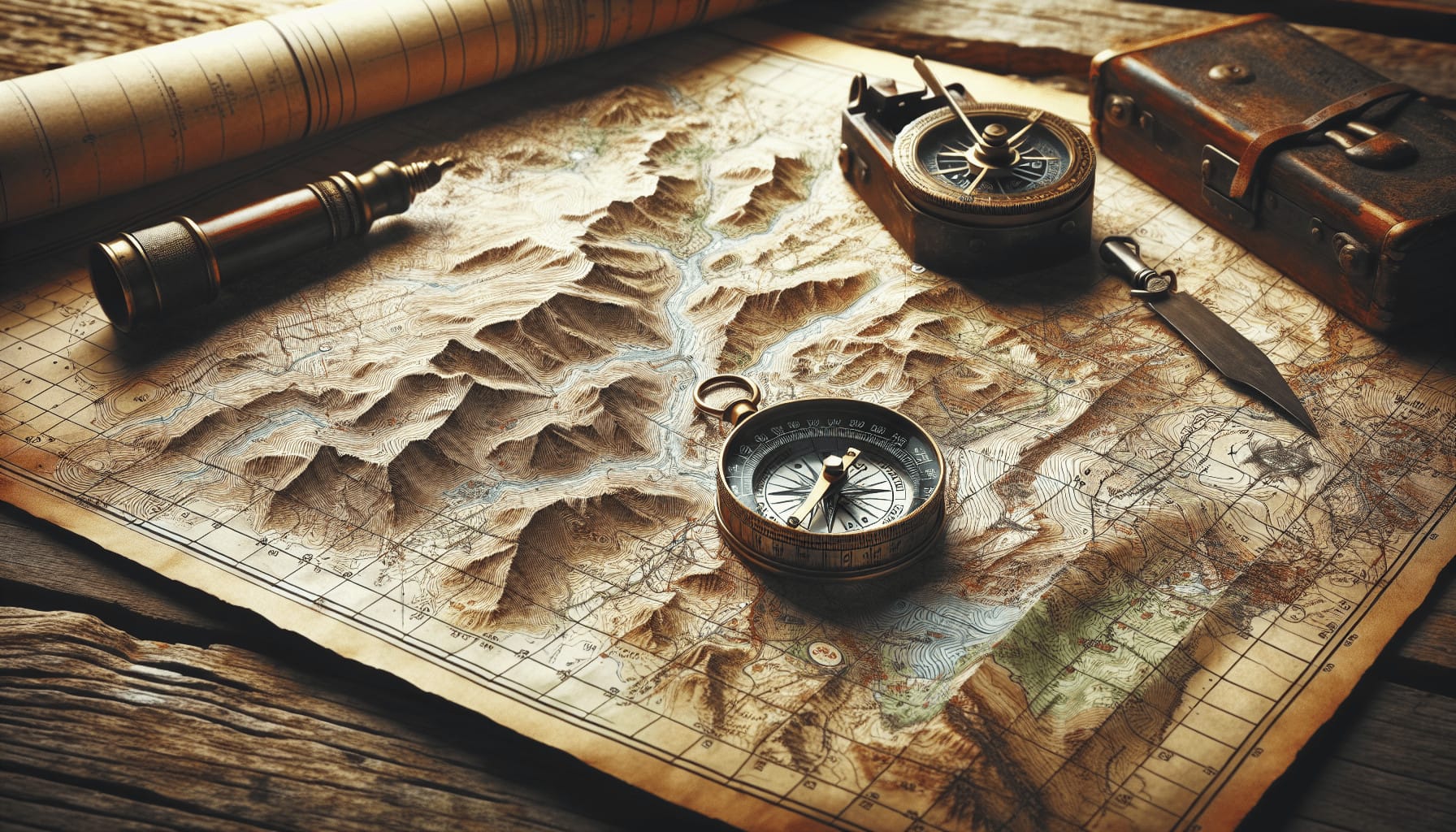Have you ever found yourself lost in the wilderness, with only a topographic map in hand, pondering over the maze of lines and symbols? Understanding topographic map symbols is a crucial skill for wilderness navigation. As digital technology becomes increasingly prevalent, the allure of traditional map reading persists, especially for outdoor enthusiasts seeking authentic experiences off the beaten path.
Topographic maps offer invaluable insights into the terrain, capturing the nuances of landscape in ways that GPS technology might not. They reveal the contours of the earth, indicating elevation, water sources, and man-made structures, which are crucial for planning routes and avoiding potential hazards. In a world where reliance on digital devices can often be precarious in remote locations, knowing how to read these maps empowers you to navigate efficiently and safely through the wild.

The Importance of Topographic Map Symbols
Topographic map symbols are more than just a collection of squiggles and dots; they are a language of their own, detailing the physical features of the landscape. Understanding these symbols allows you to interpret the map accurately and make informed decisions when in the wilderness. This skill is vital for anyone who enjoys hiking, camping, or any form of outdoor adventure.
Why Map Symbols Matter
Map symbols provide a shorthand representation of the features you will encounter in nature. They help you visualize your surroundings without being physically present, enabling you to plan your journey with precision. From terrain elevation to water bodies, these symbols unlock the story of the land, guiding your steps into unfamiliar territory with confidence.
Topographic Map vs. Other Map Types
While there are various types of maps, topographic maps are distinct due to their focus on elevation and landscape details. Unlike road maps or city maps, which highlight roads and infrastructure, topographic maps prioritize natural features. This distinction makes them essential for outdoor navigation where the emphasis is on terrain rather than human-made structures.
Key Topographic Map Symbols and Their Meanings
Understanding key symbols on a topographic map is fundamental to using the map effectively. Let’s explore some of the most common symbols and their meanings. This understanding will serve as the foundation for all your navigation efforts.
Contour Lines
Contour lines depict the elevation and shape of the terrain, representing imaginary lines on the ground that connect points of equal elevation. The closer the lines are to one another, the steeper the terrain. Conversely, when the lines are further apart, the terrain is gentler.
Water Features
Symbols on topographic maps also represent water features such as rivers, lakes, and swamps. These are usually shown in blue. Understanding these markings is crucial for navigation, as they can serve as landmarks or obstacles depending on the landscape.
Vegetation and Land Cover
Vegetation is represented through various symbols or shading patterns, indicating forested areas, swamps, or marshlands. This information helps you assess potential challenges you might face, such as dense vegetation that could slow your progress.
Man-made Features
Topographic maps also include symbols for man-made structures like roads, buildings, and trails. These features are typically depicted using black or brown lines and shapes, helping you orient yourself in relation to civilization even when deep in the wilderness.
Boundaries and Cultural Features
Understanding boundaries and cultural features is important to navigate areas where jurisdictions might change or where you transition from public to private land. These are commonly depicted using different line styles or colors.
Reading and Interpreting Topographic Maps
Reading topographic maps requires practice and attention to detail. By developing your skills in interpreting these maps, you enhance your ability to navigate and make safe decisions in the wild.
Orientation and Scale
The first step in reading a topographic map is to orient yourself with the map’s scale and compass direction. Understanding the scale will help you gauge distances on the map relative to real life, ensuring accurate route planning.
Analyzing Contour Lines
Analyzing contour lines allows you to interpret the terrain’s topography. Pay attention to the spacing and direction of the lines to assess elevation changes and identify features such as hills, valleys, or plateaus.
Determining Difficult Routes
By examining contour lines and other features, you can identify areas that might pose difficulty, such as steep inclines or rugged terrain. This assessment aids in choosing the safest and most efficient path through the wilderness.
Practical Applications of Topographic Map Skills
Developing topographic map skills is not just about theoretical knowledge; it has practical applications that are vital for any wilderness adventure.
Planning Your Route
Before setting out on your journey, a topographic map can be an invaluable tool in plotting your course. It ensures that you are prepared for the terrain type and aware of any potential challenges along the way.
Navigating Emergency Situations
In emergencies, understanding your location relative to the map can guide rescue efforts or help you find the quickest way to safety. This skill can be life-saving when digital devices fail or there is no signal.
Topographic Maps vs. Digital Navigation
While many rely on GPS devices for navigation, topographic maps offer several advantages in wilderness settings where signal issues or battery life can become problematic.
Reliability without Power
Topographic maps do not require power, making them reliable during extended adventures where charging devices may not be possible.
Greater Detail for Terrain Analysis
These maps provide a more nuanced view of the terrain, offering details that are often missed by digital screens, allowing for better planning and a deeper understanding of the land.

Advancing Your Topographic Map Skills
Once you grasp the basics, advancing your skills involves consistent practice and diving deeper into specialized areas of map reading.
Engaging with Topographical Journals and Books
Furthering your knowledge through journals, books, or courses on cartography and navigation can expand your understanding and refine your skills.
Participating in Orienteering Groups or Courses
Joining orienteering groups or participating in courses can provide practical experience in reading and using topographic maps effectively.
Conclusion
In an era dominated by digital technology, the skill of reading topographic maps remains timeless and invaluable for wilderness navigation. As you engage with these traditional maps, you build a connection with the land and gain confidence in navigating through untouched landscapes. This knowledge not only enhances your outdoor experiences but prepares you for the unexpected, ensuring your safety and success in the wilderness.
Meta Description
Gain independence and confidence in wilderness navigation by mastering topographic map symbols. Understand terrain details, avoid hazards, and enhance your outdoor adventures.
